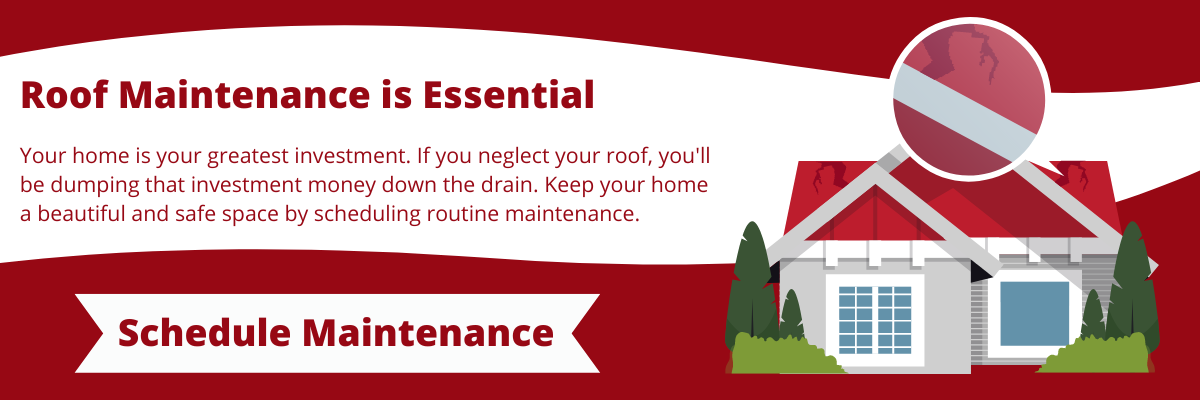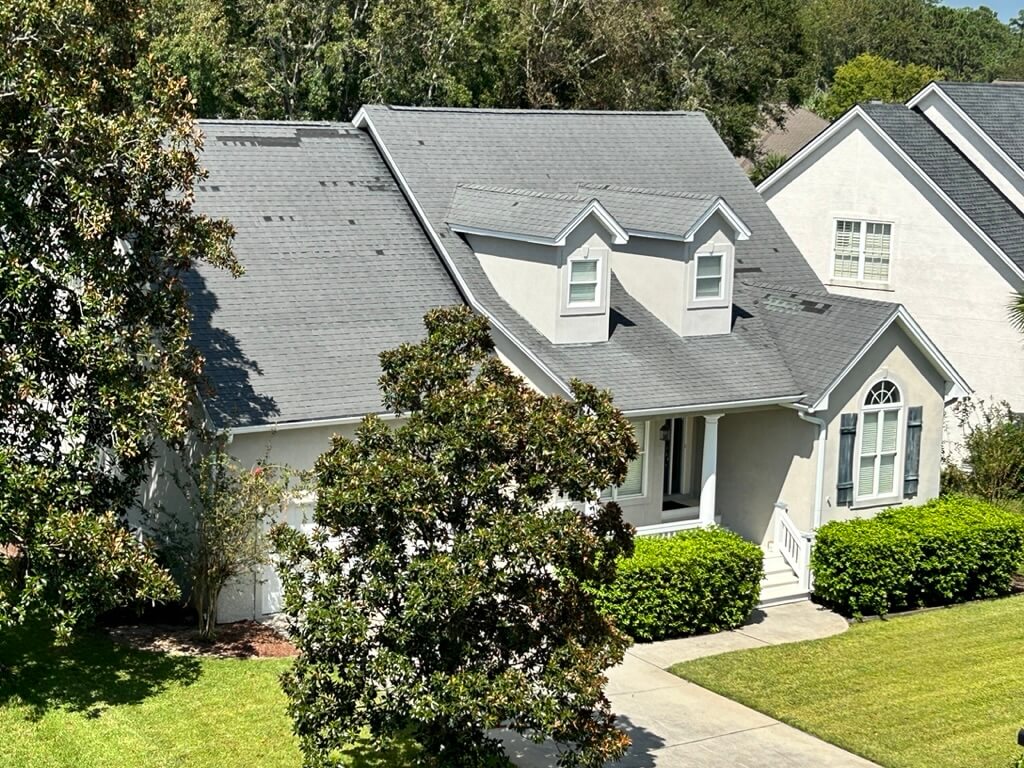
Ah, there's nothing like a wave of cool air rolling in. Wait, are those rain clouds in the distance? A gentle breeze on a sunny day can be refreshing, but when the wind starts to pick up, it can become a force to be reckoned with, especially for your home's roofing system. Though your roof is the renowned protector of your home, that doesn't necessarily mean it's invincible.
RoofCrafters has been a name in the roofing industry for nearly three decades. We see numerous storms roll in and out here in the Southeast and know precisely how they can affect roofing systems. The good news is that staying educated on how you can help is easy peasy with resources like this one.
In this article, we'll explore the effects of strong winds on roofing systems, the types of damage they can cause, how to assess that damage, and essential prevention and maintenance tips to keep your roof intact. By the time you finish reading, you'll have a fantastic idea of what you can do to keep your roof in ship shape during those pesky weather events. Let's go!
The Impact of Strong Winds on Roofs
It's no secret that strong winds can damage roofing systems. Whether the roof is made of asphalt shingles, tile, metal, or another material, high winds have the potential to cause several types of damage. Let's delve into how these winds can affect your roof.
One of the most common types of damage caused by strong winds is shingle damage. Wind can create uplift forces, lifting and loosening shingles. This damage often starts at the shingle edges and corners, making them more susceptible to further wind uplift. As shingles become dislodged or damaged, they can leave gaps where water can infiltrate, leading to leaks and potential water damage inside your home.
In addition to lifting and dislodging shingles, strong winds can also result in shingle erosion. Wind-driven debris like sand, small particles, and other airborne materials can strike your shingles, causing surface erosion over time. This gradual erosion can wear away the protective layers of your roofing material, making it more susceptible to damage and reducing its lifespan.
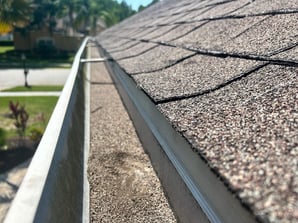
For homes with flat or low-slope roofing systems, strong winds can damage the roofing membrane. This is especially common at seams and edges where the membrane is more vulnerable. Wind can lift or damage the membrane, potentially leading to water infiltration and leaks.
Gutters and flashing are not immune to wind damage either. Strong winds can displace gutters and damage flashing, which are essential components for directing rainwater away from your roof. Water can accumulate if these elements are compromised, potentially causing water damage.
Okay, now that we have covered the basics, let's go a little further. By understanding the specifics of the types of damage brutal winds cause, you can often work on finding solutions before the storm even rolls in. How's that for preparedness? Here are some more ways that wind can affect your roof:
- Shingle Damage: High winds can lift and loosen shingles. This damage often starts with the shingle edges, making them susceptible to further wind uplift.
- Shingle Erosion: Wind-driven debris like sand and small particles can strike your shingles, leading to surface erosion over time.
- Water Infiltration: Loose or missing shingles create gaps where water can infiltrate, potentially causing leaks and water damage inside your home.
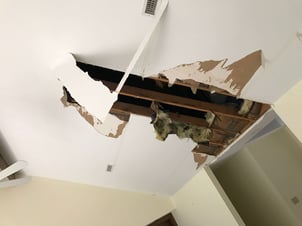
- Roof Membrane Damage: Strong winds can damage the roofing membrane for flat or low-slope roofs, especially at seams and edges.
- Gutter and Flashing Issues: Wind can also affect gutters and flashing, disrupting their function and causing potential water damage.
Assessing Wind Damage
After a severe wind event, it's crucial to assess your roofing system for damage. Here's how you can do it:
- Visual Inspection: Start with a visual inspection from the ground. Look for missing, curled, or lifted shingles. Also, check for any debris on your roof.
- Attic Examination: Head to your attic to check for signs of water leaks, which can indicate roof damage. Look for stained insulation, wet spots, or visible light coming through the roof.
- Professional Inspection: Consider hiring a professional roofing contractor for a thorough assessment. They have the expertise to identify hidden damage and provide a detailed inspection report.
Prevention and Maintenance Tips
Prevention is key, right? Now, of course, you can't prevent a storm. However, you can perform specific tasks to ensure your roof is ready to face one. By doing this, you're helping put a coat of armor on your roofing system, which will minimize damage or prevent it from happening in the first place. To protect your roofing system from wind damage, consider these preventive measures:
- Regular Inspections: Conduct annual roof inspections to catch minor issues before they become significant problems.
- Secure Loose Shingles: If you notice any loose or lifted shingles, secure them promptly to prevent further wind damage.
- Trim Nearby Trees: Overhanging branches can cause roof damage when they break in strong winds. Keep trees near your home well-trimmed.
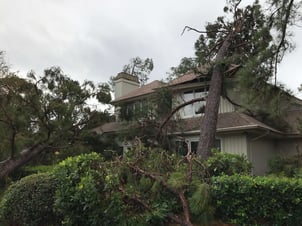
- Reinforce Roofing Materials: When installing or replacing your roof, use roofing materials designed to withstand high winds. Ensure proper installation and consider wind-resistant shingles.
- Install Roof Straps: Roof straps or clips can provide extra protection in regions prone to hurricanes and tornadoes.
Is it Time to Protect Your Roof from Incoming Wind?
Maintaining your roof is never a bad idea, no matter the weather or the season. In fact, it's crucial for the health of your entire home. If a hurricane or other major weather event is rolling your way, head out and follow the tips we've listed here. Your roof will thank you for it again and again!
All in all, strong winds can pose a significant threat to your roofing system, potentially causing damage and water infiltration. Regular inspections, prompt repairs, and preventive measures are your best defenses against wind-related roofing issues. By staying proactive and addressing damage as soon as it occurs, you can ensure your roof weathers the storm and remains a sturdy protector of your home.
If you live in one of our service areas, help isn't far away! When you're ready, visit our contact page to connect with one of our friendly RoofCrafters representatives. We're excited to begin your roofing project!
My name is Kevin Mills, and I am the lead estimator for RoofCrafters’ Tampa division. I’m originally from Michigan, and I enjoy hunting, fishing, and spending any free time outdoors. What I’m most passionate about, though, is helping business owners and homeowners alike achieve their roofing goals, all while providing a seamless customer journey.



